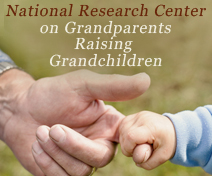ScholarWorks > Institutes & Centers > Grandparents Raising Grandchildren > GrandFamilies > Vol. 3 > Iss. 1 (2016)
Abstract
Microaggressions are manifestations of prejudice targeted toward socially marginalized groups. They may take several forms: subtle discriminatory remarks, behavior, or environmental characteristics. In contrast to overt aggressions, microagressions are not easy to detect and often invisible to both perpetrator and recipient. Existing research demonstrates that experiencing microaggressions is harmful to members of stigmatized groups and provides a framework to combat these negative effects. Although most of the literature on microaggressions is focused on groups characterized by minority race and female gender, microagressions might also be experienced by members of grandfamilies, who often have socially marginalized status. Microagressions toward grandfamilies may take three main forms: microassaults (discrimination), microinsults (insensitivity), and microinvalidations (nullification of experience). Service providers working with grandfamilies can learn to identify microaggressions and suggest ways by which grandfamilies can minimize or eliminate their influence. This article reviews the theoretical framework of microaggressions and notes ways in which it is applicable to grandfamilies. It also includes how this concept may strengthen the work of professionals who assist grandfamilies.
Recommended Citation
Yancura, L.,
Fruhauf, C. A.,
Greenwood-Junkermeier, H.
(2016). Recognizing Microaggressions: A Framework for Helping Grandfamilies. GrandFamilies: The Contemporary Journal of Research, Practice and Policy, 3 (1).
Available at: https://scholarworks.wmich.edu/grandfamilies/vol3/iss1/6
